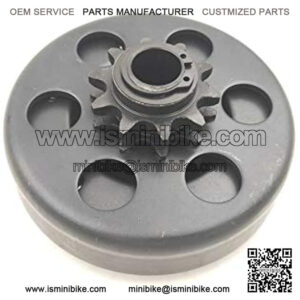If your clutch is dragging, the pressure plate is not releasing fully. This can be caused by several different issues, including low fluid levels, the air in the system, a worn throw-out bearing, or a faulty clutch slave or master cylinder. In most cases, you’ll be able to fix the problem yourself with a little troubleshooting.
1. Understand the Problem
The first step is to understand what’s causing the clutch drag. In some cases, it may be as simple as low fluid levels or air in the system. Other times, it may be caused by a more serious issue, like a worn throw-out bearing or faulty clutch slave or master cylinder.
2. Check the Clutch Fluid Level
If the clutch fluid is low, it may be causing the clutch to drag. To check the fluid level, find the reservoir and remove the cap. The fluid should be at or above the “full” line on the side of the reservoir. If it’s not, add more fluid until it reaches that level.
3. Inspect the Clutch Slave Cylinder
The next step is to inspect the clutch slave cylinder. This is what supplies hydraulic pressure to the throw-out bearing, so if it’s not working properly, it can cause the clutch to drag. Start by checking for leaks in the lines leading to and from the cylinder.
If there are no leaks, then try depressing the clutch pedal with the engine off. The pedal should depress fully and smoothly. If it doesn’t, then the slave cylinder may need to be replaced.
4. Test the Clutch Pedal Free Play
One of the most common causes of clutch drag is too much free play on the pedal. To check for this, simply depress the pedal and see how far it travels before engaging the clutch. Before you feel any resistance, there should be about 1/2 to 1 inch of travel. You’ll need to adjust the pedal free play if there’s more than that.
5. Adjust the Clutch Pedal Free Play
If your pedal has too much free play, you can adjust it by loosening the locknut on the clevis and turning the adjuster clockwise. Once you’ve made your adjustment, be sure to retighten the locknut.
6. Bleed the Clutch System
If air has gotten into the clutch system, it can cause the clutch to drag. Start by finding the bleeder screw on the slave cylinder to bleed the system. Loosen the screw and have a friend depress the pedal while you hold a cloth over the bleeder hole. When fluid starts coming out, tighten the screw and have your friend release the pedal. Repeat this process until there are no more bubbles in the fluid.
7. Replace the Clutch Master Cylinder
If bleeding the system doesn’t fix the problem, then you may need to replace the clutch master cylinder. This is a more serious repair, so you’ll likely need to take your vehicle to a professional mechanic.
8. Replace the Clutch Slave Cylinder
If the clutch slave cylinder is worn or damaged, it can cause the clutch to drag. To replace it, you’ll need to remove the old one and install a new one in its place. This is a more serious repair, so you’ll likely need to take your vehicle to a professional mechanic.
9. Replace the Throw-Out Bearing
If the throw-out bearing is worn or damaged, it can cause the clutch to drag. To replace it, you’ll need to remove the old one and install a new one in its place. This is a more serious repair, so you’ll likely need to take your vehicle to a professional mechanic.
10. Have the System Professionally Inspected
If you’ve tried all of the above troubleshooting steps and the problem persists, you’ll need to take your vehicle to a professional mechanic for further diagnosis. They can help determine if there’s a more serious issue causing the clutch drag.
Now that you know how to fix clutch drag, you can get back on the road and enjoy your drive!
About Minibike Clutch
“mini bike clutch”
“mini bike clutch brake”
“mini bike clutch cover”
“mini bike clutch near me”

